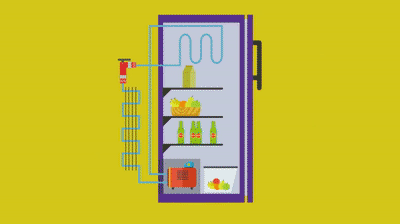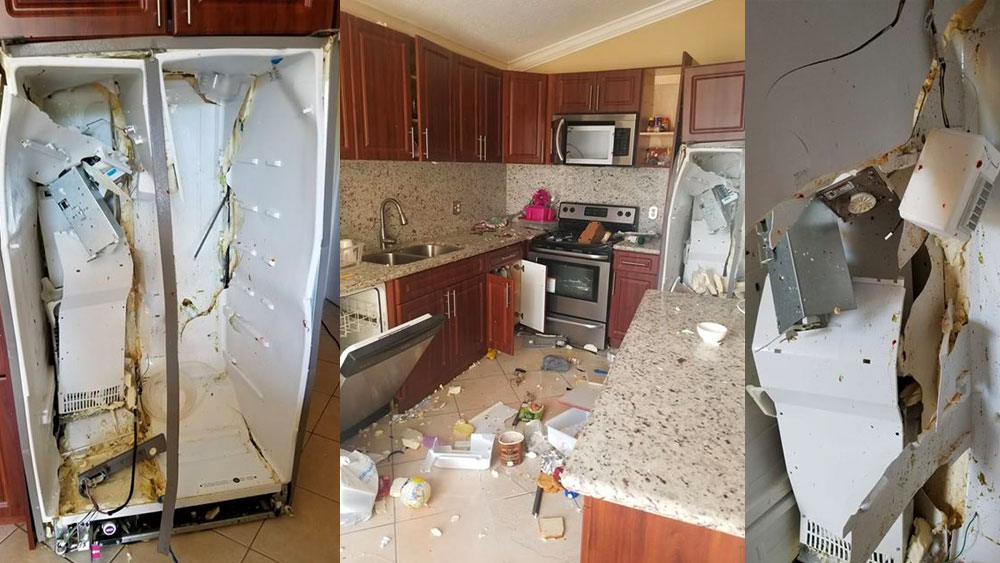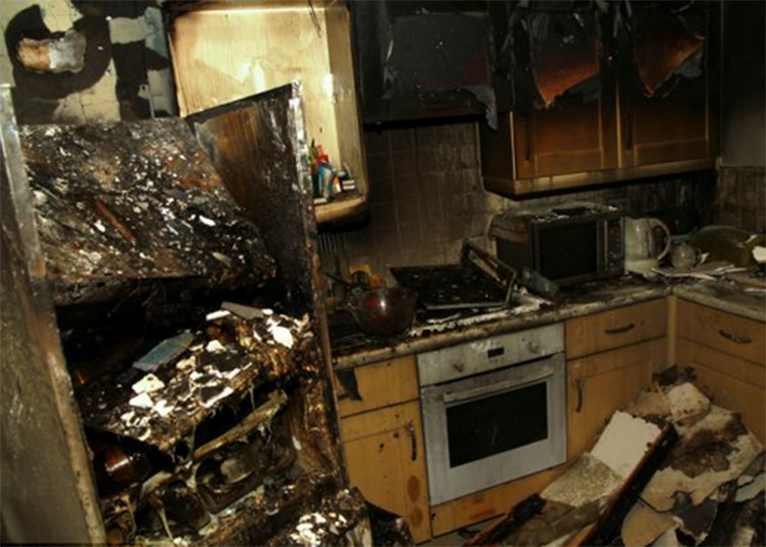We must not have forgotten the clip of the refrigerator burning black not long ago on social networks recorded by a girl. There are opinions that this is a staged clip for the purpose of asking for likes and views because many people say that their refrigerators have not had any problems for decades. So can the refrigerator actually burn?

To answer this question scientifically and reliably, we cannot just say it, but must rely on the structure and operating principle of the refrigerator.
The basic structure of a refrigerator consists of 4 main devices:
1. Condenser;
2. Compressor (block);
3. Refrigerant (gas);
4. Seamless evaporator.

Photo: Suadieuhoa.edu.vn
In there:
– Condenser: is a heat exchange device between the condensing refrigerant (refrigeration gas) and the cooling medium (water or air). The condenser performs the main task of discharging the heat of the condenser refrigerant to the environment. The condenser is usually made of iron, copper and has a heat sink.
– Compressor (Block):
With a role similar to the human heart, the compressor (block) will perform the following tasks:
– exhaust the refrigerant vapor generated in the evaporator;
– maintaining the pressure necessary for low-temperature evaporation;
– compress steam from evaporator pressure to condenser pressure and push it into condenser.
– Refrigerant (Gas):
As we know in second-order physics: When evaporating, the temperature of the liquid decreases. Therefore, people use volatile liquids (e.g. pure ammonia) “into” the refrigerator to create a cold temperature. The evaporation temperature of the refrigerants is around minus a few tens of degrees Celsius.
– Evaporator:
This is where heat exchange occurs between the refrigerant on one side and the medium that needs to be cooled on the other. The evaporator is responsible for collecting heat from the cold environment thanks to the cold gas that boils at a low temperature to create and maintain a low temperature in the refrigerator. This unit is installed behind the capillary or throttle valve, in front of the compressor in the refrigeration system.
Working principle of refrigerator

Here we will not go into depth, but just need to understand 4 basic steps as follows:
Step 1: Compressor compresses gas (refrigerant):
The compressor (No. 4) will compress the refrigerant to high pressure and high temperature. At this time, the medium is in the gaseous state.
Step 2: Condensation at outdoor unit (1):
The compressor pushes the refrigerant to the outdoor unit (no. 1). Here the medium at high pressure and temperature is cooled by the air and condenses into a liquid of high pressure and low temperature. This is also where the process of giving off heat to condensate occurs, so when we touch the side of the cabinet where the condenser is located, it will feel hot.

Working principle of refrigerator
Step 3: Expand (2):
Next, the high-pressure liquid passes through the expansion device, also known as the throttle valve (No. 3). Under the action of the throttle valve, the medium from high pressure and low temperature becomes low pressure and low temperature.
Step 4: Vaporizing at the indoor unit (3):
Here the refrigerant receives hot heat (from the air inside the refrigerator) to vaporize. During the vaporization process, the refrigerant will collect heat from the air in the refrigerator and cool the environment in the refrigerator.
After vaporization, the refrigerant (gas) will return to the compressor to continue a new cycle.
So why can the refrigerator explode?

First of all, it must be confirmed, because it uses electricity, the refrigerator is also likely to catch fire like any other electrical appliance – although studies and statistics in the US show that the probability is not high (about 7% of cases). fire).
From the structure and operating principle that we have just learned above, there are a number of reasons that can cause the refrigerator to explode:
Refrigerator explodes inside a family home in West Palm Beach
Leaking gas, open electricity
The refrigerator gas tank has a very sturdy steel shell, so it is unlikely to spontaneously explode unless the gas tank is leaked due to long-term rust, causing open welds, leaking pipes … and at the same time exposed to sparks. due to a shorted power line.
Refrigerator explosion makes customers howl at Internet cafe C China
Many families, when building and installing kitchen equipment, do not pay attention or do not consider the consumption capacity of household appliances (washing machine, dishwasher, microwave oven, air conditioner …) when used at the same time. If the power line does not meet the demand, it will be overloaded and may lead to an electrical short.

The refrigerator is placed too close to heat sources
One of the reasons why refrigerators explode is because they are placed too close to other heat-producing devices such as gas stoves, microwave ovens, ovens, etc. cold is also “spoiled”.
In addition, the power line to the refrigerator, if placed too close to the curtains, blankets, and cushions, will increase the danger. When the power line is short on fire, it is easy to spread, touch these materials and drag the refrigerator.
Refrigerator is too old, not maintained, regularly maintained
Refrigerators that are too old, have been repaired, soldered, or replaced many times will have the potential to leak dust and clog the capillary tubes connecting the condenser to the evaporator, thereby causing the pressure to be too high, reducing cooling capacity of the refrigerator. In addition, too old refrigerators are also at risk of damaged components such as relays, cyclones, leading to the risk of fire and explosion…
